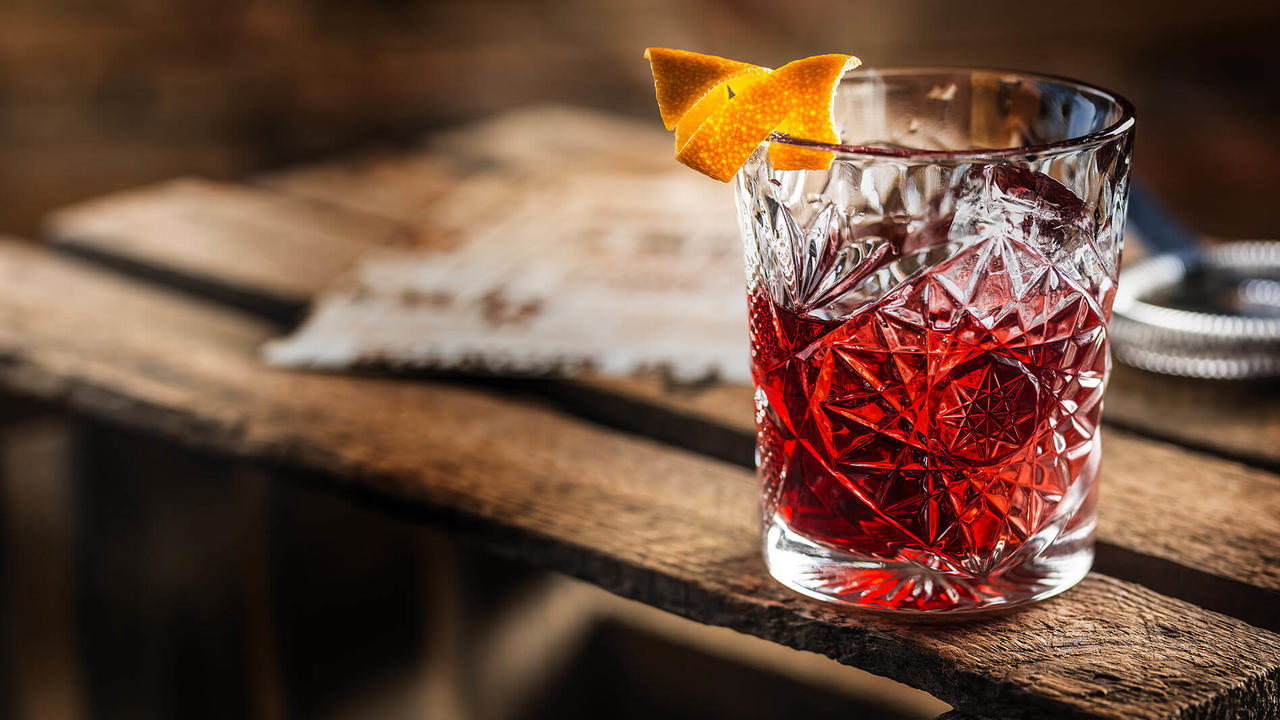Making your own vermouth at home couldn't be easier with our expert guide. Infusing alcohol has become something of a trend recently in bartending, but this goes beyond Skittles Vodka.
Learn about our simple vermouth recipe, as well as the top flavour combinations...
Homemade vermouth recipe - 4 steps
Making your own vermouth couldn't be easier with our ridiculously simple recipe. There's only 4 ingredients and 4 steps to it! Let's get infusing and fortifying...
Ingredients
-
1 liter fortified wine (a dry white wine like Reisling is best)
-
50-100g sugar
-
250ml vodka (no specific brand)
-
Herbs of your choice (about 20 grams of each)
Method
Step 1
Collect your herbs, if some of these need crushing to release the flavours (such as cardamom), use a rolling pin.
Once ready, encase them in a container or large jar, fill with vodka and stir. Seal the container and leave for two weeks in a dark place at room temperature, shaking daily to keep the flavours moving.
Step 2
When ready, strain your herbal infusion through a few layers of cloth giving them a good squeeze to extract all the goodness. Replace the lid on the container of liquid and leave for a further 3 hours to settle.
NOTE: A large amount of liquid is not required for the rest of this recipe, it was just required for fermentation, which is harder to achieve with smaller volumes. Therefore, use only half the remaining liquid from here on out.
Step 3
Pour your wine into a cooking pot and add the sugar along with your (half measure) of herbal infusion, stirring as you go along. Give it a try, adding more alcohol or sugar to sweeten as preferred. Heat to 60-70°C, then take off the heat and allow it to cool down. Once the sediment has settled, it’s time to strain the liquid.
Step 4
Your vermouth is now ready to be bottled! Sealing it securely and leave to age in a cellar or fridge. This allows all those great flavours to come out. If you can, two to three months is the optimum time, but even 2-3 weeks will suffice. As a general rule – the longer it’s left, the better the taste!
Depending on the ingredients and measurements you add, you'll create either a sweet vermouth or dry vermouth.
Best flavour combinations for vermouth

Vermouth has a wealth of potential when it comes to tasting notes. There are many routes of herbs and spices you can take for infusing your own vermouth, so there's a perfect match out there for everyone!
Citrus - lemongrass, orange peel or grapefruit peel, lemon zest
Aniseed tones - angelica, liquorice bark, star anise
Floral - rose petals, lavender
Bitterness - wormwood, rhubarb (dilute with hot water)
Herbal - rosemary, dried chamomile, cardamom pods, sage
Sweet - cinnamon stick, vanilla pods
Sharpness - juniper berries
What is Vermouth?

Vermouth is a fortified wine flavoured with botanicals, such as roots, bark, flowers, herbs and spices. It's essentially an infused wine.
Vermouth is best known in its Italian form, as 'Martini'. It's used to make many classic cocktails like the Negroni and Boulevardier.
There are two types of vermouth, sweet vermouth and dry vermouth. Sweet vermouth comes from Italy and is very popular throughout western Mediterranean countries. The dry version originates from France and is great in a Dry Martini.
Frequently asked questions - making vermouth at home

How long does vermouth last?
Homemade vermouth can last for 4 years in the fridge once opened.
What's the best wine for vermouth?
There isn't a 'best wine to use', being completely honest. We suggest using a Riesling, but you can also use a Pinot Grigio or Sauvignon Blanc. It's whatever your preference for wine is.
We'd recommend using a wine that's got a bit of quality to it, as it's reflected in the final product. Best to avoid cheap wine. It's the key ingredient after all!
Where does vermouth come from?
Hailing from Italy, vermouth was initially created sometime in the 18th century and used for medicinal purposes. It grew in popularity until bartenders started to use it frequently in the 19th century, along with the French discovery of dry vermouth.
How do you drink vermouth?
Once you've made your vermouth creation, it's time to drink it. You can use it in a multitude of vermouth cocktails like the Negroni, Boulevardier, Americano, Martini, or Manhattan.
You can also drink vermouth straight. Simply take a few ice cubes, orange slice, a couple olives and fill with your vermouth. A proper way to really appreciate the drink!
If you liked this article then why not check out our article How to Make Mead or Homemade Alcohol & Syrups.
Want to get behind the bar and use vermouth to make classic cocktails? Learn about our bartender courses.

